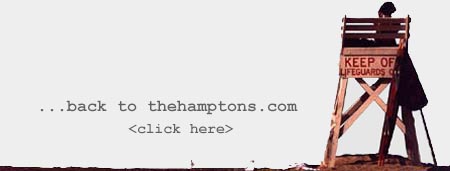|
Patricia Potter (Luce, Botond) Chapman, mother of Tina Botond, describes the log line for her new book Tea on the Great Wall just published by Earnshaw Books, Shanghai: “Shirley Temple in Wonderland meets Japanese Bayonets, Nazis, and Chinese Opium Addicts.”
The memoir begins with one Japanese invasion, proceeds to the Nazi take-over of her school the Kaiser Wilhelm Schule, and ends with the second Japanese invasion, World War II, and her escape with her mother, Edna Lee Potter. In between is the story of the pampered life of the privileged foreigners, called Shanghailanders.
Pat writes that she learned to say Bozhe moi! and spasibo from her Russian refugee governess; Buona sera and how to do a Court curtsy from Count Cal and Countess Marlys Calcina (Tofte, Chatel); Hungarian Lazlo Hudec was the architect of their house. She recited French and German poems to her parents’ guests and learned from the great Chinese opera dancer Mei Lanfang how to do his exquisite scarf dance.
Entertaining was great fun, even for a child. Pat describes how she watched Cook make spun sugar waves for his ice cream battleship:
Cook’s greatest achievement was the dessert created in honor of the two admirals. He out did himself, gaining great face for himself and for my parents. First he carved a block of ice into a battleship two and a half feet long. Each detail crisp and correct, it was displayed on rolling spun sugar waves over blocks of ice, a dramatic centerpiece. Balls of ice creams, meringue kisses and liqueur-laden fruits were tucked among the waves.
Cook had created the spun sugar with his chopsticks. I had hung around to see how he made this amazing sugar lace.
“Littie Missie,” he had said. “Please, more better you go to door, too muchee trouble you stay this side.”
After I had stepped out of the way, he covered the floor with Chinese newspapers, then dipped his chopsticks into the sugar syrup that he’d prepared. In one fluid motion he flung the golden liquid high above him. The strands floated down onto the heavy black ink characters and advertisements of the paper. When done, he tenderly gathered the fragile glistening strands and arranged them into waves around the ice battleship.
But the second Japanese invasion of Shanghai in 1937 made our lives increasingly difficult. We stayed through 1939 and the summer of 1940 when the Nazis invaded one European nation after another. While the US was not at war with Japan, our British and French friends were suffering and the former easy relationship with Germans froze. The assault on a member of our household by Japanese soldiers led to our immediate departure in 1940, along with 3,000 other women and children, on the USS Monterey.
My fellow passengers soon organized classrooms for the children who would be missing two months of school on the way to San Francisco. Teachers had been selected in Mathematics, English, and American History. To my joy, my American History teacher was Noel Coward, whose plays and music I loved. He was sailing to Australia on a Secret Service assignment. England had been at war with Germany for over a year. With some 200 students of different ages packed into one of the ship’s dining rooms, Mr. Coward lectured about the industrial revolution in America. He disembarked in Sydney. I thanked him, saying that I hoped I’d see him again—playing on the words of his lovely song, “I’ll See You Again.” I didn’t know that I would indeed see him again and under very glamorous circumstances.
Life went on; seven years later I married Henry Luce III. In New York, my stepmother-in-law Clare Booth Luce invited me, a 20-year-old bride, to lunch at the then stylish Colony Restaurant. She was wearing a delicate little ribbon tucked into carefully casual blonde waves. Strands of immense pearls embraced her neck. She looked exquisite.
The guests arrived. First Maggie Case, the editor of Vogue. Then Noel Coward, with a friend, sauntered up to our table. He blew kisses at the two other women and nodded to me on introduction, with no memory of having seen me before. The four of them gossiped across the table, tossing famous names back and forth, laughing hilariously. They didn’t stop during the first and second courses. No one spoke to me, and there was no opportunity for me to enter the conversation. Then, as the dessert dishes were being brought, there was a break. I took advantage of it. After all, I was someone too. I knew some people and I’d been a place or two.
“Mr. Coward,” I ventured, smiling brightly, “You and I have met before.”
“Oh, really? Where?” he asked. Slightly bored.
“On board the USS Monterey,” I replied. “I was one of your pupils in the American History class.”
Silence. He stared at me, his eyes suddenly widening, the lines etched down his cheeks motionless. Then, his expression abruptly changed to shock and despair.
“You―you were one of those―children?”
He dropped his head onto his hands, his raised elbows propped on the table. A spoon clattered to the floor. He turned back to his hostess, and groaned dramatically.
“Oh, Clare, how I have aged! How I have aged!”
The others murmured sympathetically. I had committed a major faux pas. They returned to their conversation. Harry Hopkins. Ilka Chase. Salvador Dali.
Autographed copies of Pat’s book will be available at Book Hampton!
|


